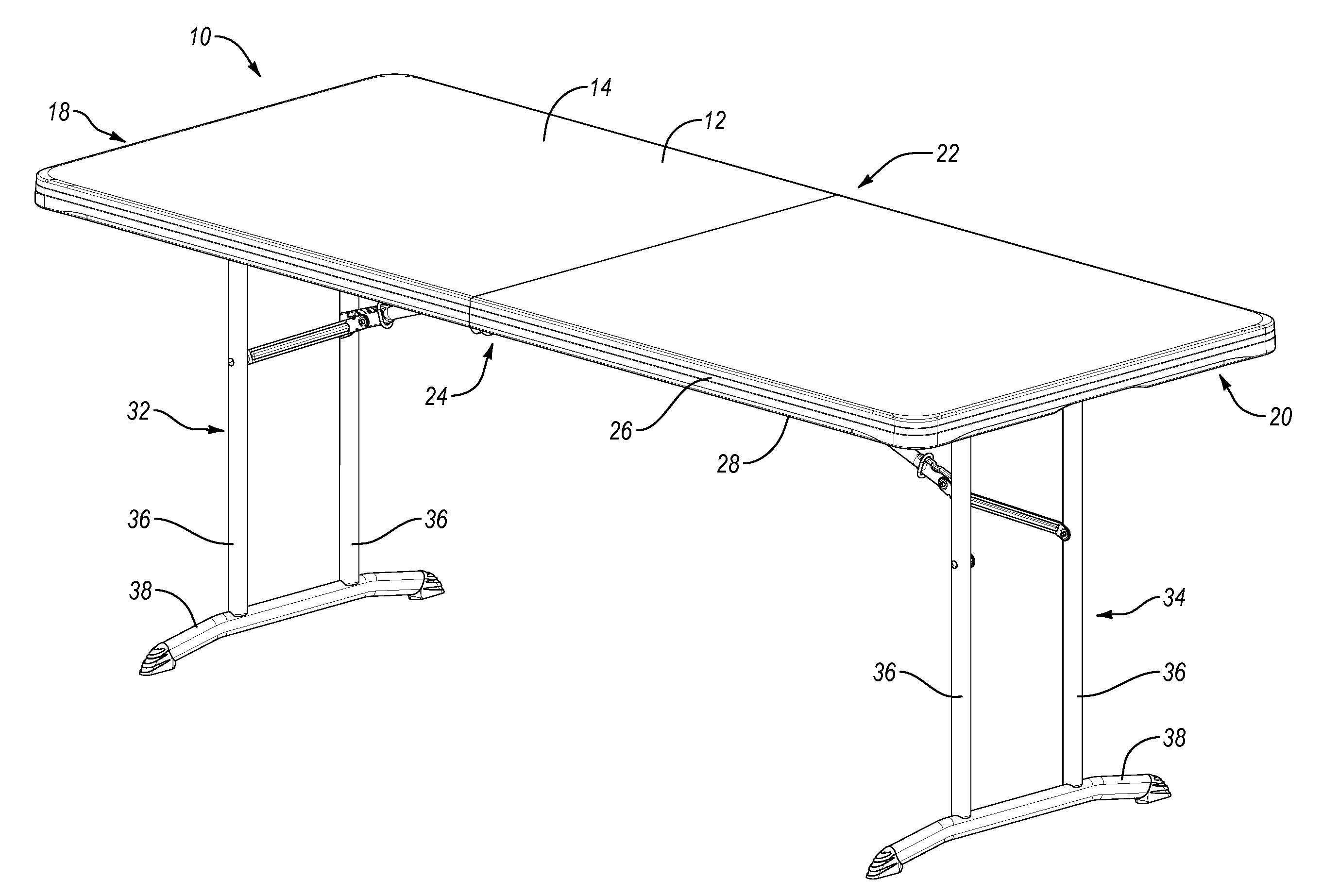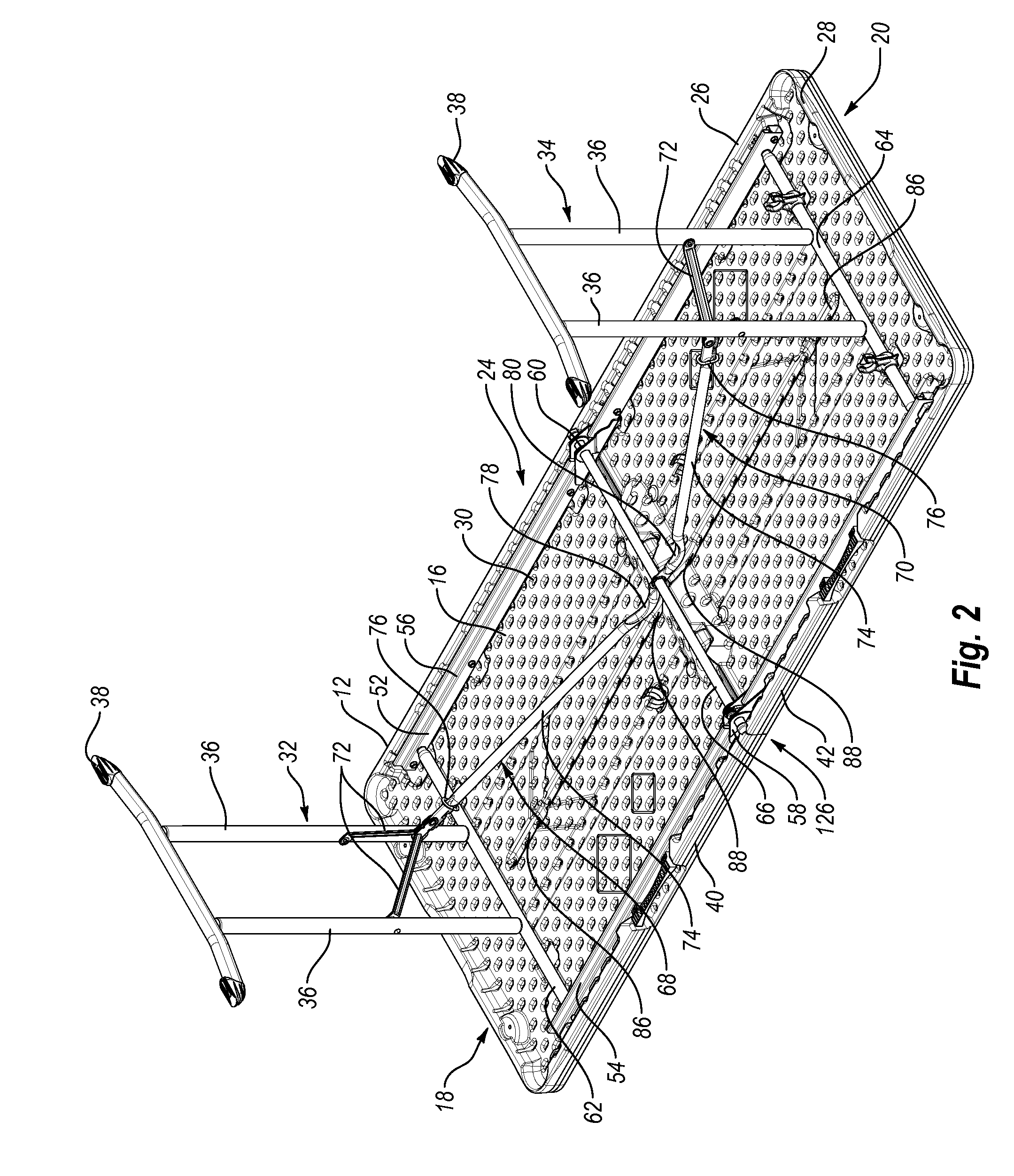Locking mechanism for a folding table
a locking mechanism and folding table technology, applied in the field of furniture, can solve the problems of large storage area, large storage area may be especially problematic, and need significant storage space, and achieve the effect of reducing disadvantages and problems
- Summary
- Abstract
- Description
- Claims
- Application Information
AI Technical Summary
Benefits of technology
Problems solved by technology
Method used
Image
Examples
Embodiment Construction
[0011]A need therefore exists for a table that eliminates or diminishes the disadvantages and problems described above.
[0012]One aspect is a table that may include a table top and one or more support structures or legs. The support structures may be movable between an extended or use position and a collapsed or storage position relative to the table top. When the support structures are in the use position, the support structures may extend outwardly and away from the table top. When the support structures are in the collapsed position, the support structures may be disposed generally parallel and at least proximate a lower or underneath portion of the table top. At least a portion of the support structures may contact or abut the lower portion of the table top when the support structures are in the collapsed position. Advantageously, when the support structures are in the use position, the table may support a wide variety of objects and the table may be used for different purposes. ...
PUM
 Login to View More
Login to View More Abstract
Description
Claims
Application Information
 Login to View More
Login to View More - R&D
- Intellectual Property
- Life Sciences
- Materials
- Tech Scout
- Unparalleled Data Quality
- Higher Quality Content
- 60% Fewer Hallucinations
Browse by: Latest US Patents, China's latest patents, Technical Efficacy Thesaurus, Application Domain, Technology Topic, Popular Technical Reports.
© 2025 PatSnap. All rights reserved.Legal|Privacy policy|Modern Slavery Act Transparency Statement|Sitemap|About US| Contact US: help@patsnap.com



